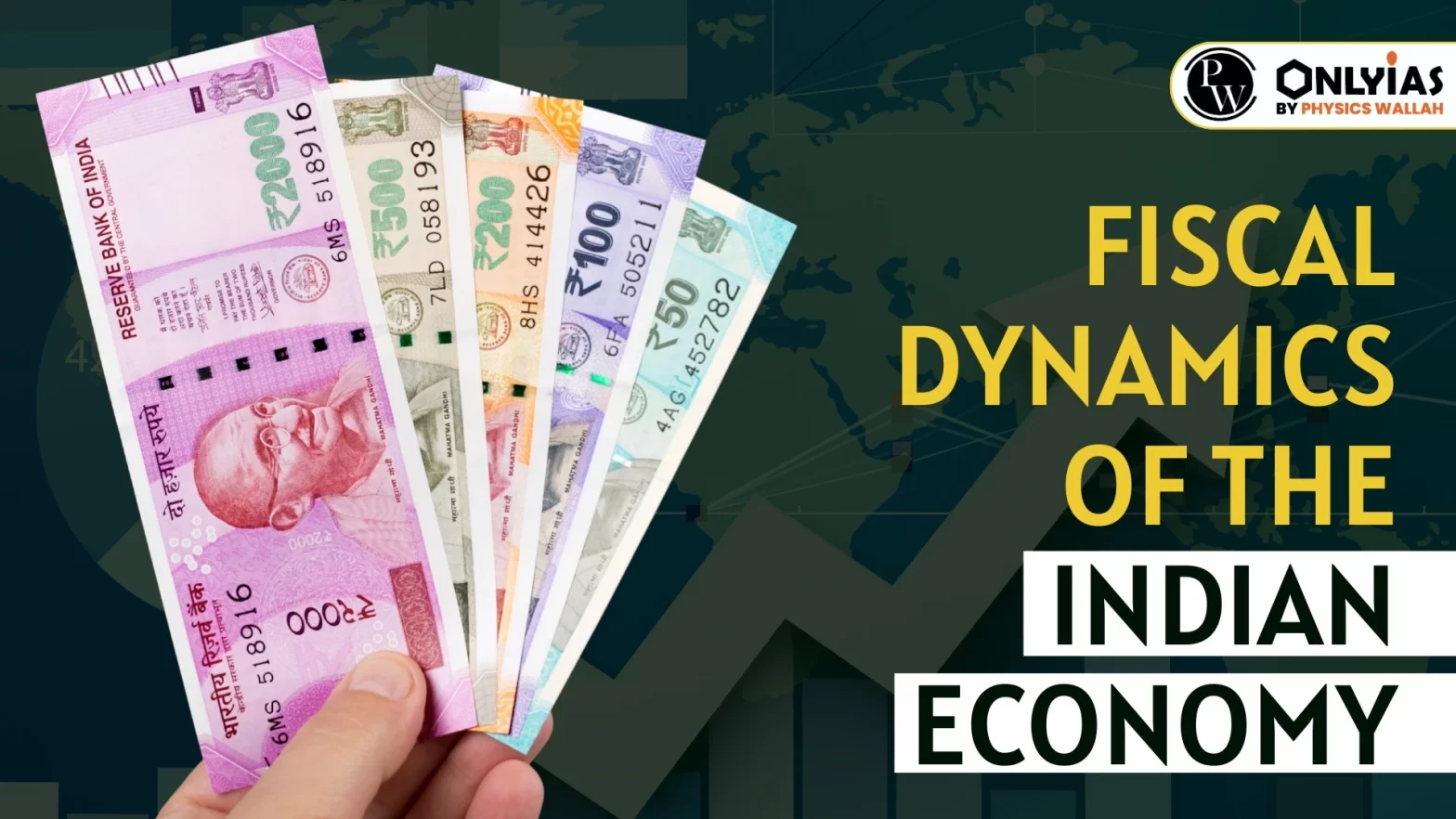Context:
- This article is based on an Editorial “India’s Fiscal Future: Lots done, more to do” which was published in the Live Mint. The robust performance of the Indian economy in recent times has revived the aspirations of the country to emerge as a developed economy by 2047.
- The World Economic Outlook update of July 2023 by the International Monetary Fund (IMF) projects that global growth is estimated to fall from 3.5% in 2022 to 3% in 2023.
| Relevancy for Prelims: World Economic Outlook Report.
Relevancy for Mains: Challenges faced by the Indian Economy and Way Forward for desired Economic Growth. |
Indian Economy – Scenario of India’s Central Government’s Debt
- General government debt is the total gross debt of the government at the end of a quarter or year. It stood at 57.1% of the GDP at the end of March 2023.
- The N.K. Singh Committee recommended a limit of 60% for India’s public debt to GDP ratio (consisting of 40% for the Central and 20% for the state government’s debt).
Also Read: IMF Forecast For Global Growth
Status of Indian Economy:
- High Central Expenditure: Capital expenditure has risen by 1.1% of GDP, and current expenditure has increased by almost double from 2018-19 to 2023-24.
- Limited States Deficit: The state deficit hasn’t widened very much since the pandemic.
- Growing Tax Revenue: Tax revenue has been growing at a faster rate than national income.
- Other Current Expenditures: After a careful reduction in the number of central government-sponsored schemes, these expenditures have been raised in recent years.
Reasons for Resilience in the Indian Economy:
- Sensible Management of Macroeconomic Conditions: India has been able to manage its price rise while ensuring that domestic demand did not collapse and infrastructure construction was escalated through a spike in public capital expenditure.
- Fiscal Consolidation: In the Union Budget 2023-24, the Government has adhered to its fiscal deficit target of 6.4% of GDP for FY23 to promote resilience and macroeconomic stability.
- Improving Spending Quality: India’s fiscal finances are in better shape in terms of spending quality as capital spending.
- Controlled Total Expenditure: It touched a lower 13.9% of the budget target in April- May 2023 as against 14.8% in the same period of the last fiscal.
Challenges Faced by the Indian Economy:
- Higher Fiscal Deficit Target: Despite India’s high GDP growth, the central government fiscal deficit at 5.9% target for 2023-24 is much higher.
- High-Interest Payment: India stands out for its high-interest bill, deficit, and debt, despite its annual growth being much higher than the world average.
- IMF Decreases India’s Estimated Growth: The IMF has marked down India’s estimated growth rate to 5.9 per cent for FY24.
- Softening global growth, faltering exports and slowing foreign direct investment flows and declining consumption demand in the domestic market is a concern for India.
- Decline in Revenues: Slower growth is anticipated to impact tax collections, as visible in a contraction of 9.6% in tax revenues in April-May 2023.
- Public Sector Borrowing: It negatively impacts economic growth and fiscal stability and leads to a crowding-out effect.
- External Factors like escalation of geopolitical stress (viz. Israel- Palestine conflict), global inflation, enhanced volatility in global financial systems, sharp price correction in global stock markets, and FDI inflows, etc., may constrain India’s pace of economic growth.
Way Forward:
- Need of Lowering Fiscal Deficit: To get the fiscal deficit back to the last normal pre-pandemic year’s level of 3.4% of GDP.
- Effective Tax Collections: As per the 15th Finance Commission’s estimates, there is over a 4% gap in tax to GDP ratio between India’s tax collection potential and actual collections.
- Increasing Non-Tax Revenue: By making renewed efforts to achieve the targets set under disinvestment, asset monetization, and diluting stakes in public sector banks, etc.
- Expenditure Rationalization: It would act to free funds available for investment. For this, non-merit subsidies which comprise 5.7% of GDP should be rationalized.
- Avoid Unnecessary New Schemes: It should be avoided unless it is an absolute imperative justified by social and economic considerations.
- Continue With Capital Expenditure: The Government should continue to focus on augmenting capital expenditure plans to kick-start the virtuous cycle of investment and growth.
- Independent Fiscal Council: India could also consider setting up an independent Fiscal Council to strengthen the fiscal responsibility framework, as suggested by the IMF.
Conclusion:
India’s economy has shown strength, but it faces challenges like high debt and lower growth. To overcome this, it needs to control spending, increase tax collection, and wisely prioritize expenses, while also navigating global uncertainties.
![]() 24 Nov 2023
24 Nov 2023

